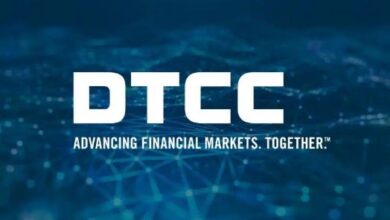The Rise of Cryptocurrency in the Luxury Sector: Exploring Its Impact on Real Estate, Luxury Travel, and Beyond

Cryptocurrencies have rapidly gained prominence as a digital asset class, with predictions suggesting that they will cover 20% of all payments in the luxury sector by 2023.
This shift has sparked discussions about the influence of cryptocurrencies and blockchain technology on industries such as real estate, luxury travel, and beyond.
In a recent webinar hosted by HAYVN, a leading digital asset-focused financial institution, providing Trading, Asset Management, Custody, Payments, and Research services to global clients, the topic of reimagining luxury through cryptocurrency was tackled in depth.
Hosted by OVI Olea, Director of Client Coverage APAC at HAYVN, the webinar featured panelists Nabil Naimy, CEO of NORBr, and Colin Baker, Founder of LifeCtyle, who shared their insights and experiences in the luxury and payment sectors.
The Friction of Traditional Banking Fiat Rails
Colin, the founder of the Lifectyle platform, which offers exclusive, luxury travel services for those that are active and interested in digital currencies,highlighted the challenges posed by traditional banking fiat rails in luxury transactions.
He explained that these traditional financial systems often introduce friction, causing delays and uncertainty in payment processes. Compliance requirements, while necessary, sometimes lead to prolonged hold-ups in major payments, with banks struggling to navigate the demands of different countries’ regulators. Such delays can be particularly problematic for time-sensitive luxury services, like private jet bookings, where clients often require swift and guaranteed transactions.
For this reason, Colin emphasized that the finance industry has made limited progress in terms of innovation over the past decade. While there have been incremental improvements in payment speed, the compliance burden has become a significant obstacle. The stringent compliance checks imposed by banks, coupled with the complexities of international regulations, can impede seamless transactions.
These challenges further underscore the importance of finding alternative payment systems that can offer faster and more reliable transactions in the luxury sector.
Given the limitations of traditional banking systems, the panelists explored the potential of cryptocurrencies as a solution. Nabil, representing a payment infrastructure company, discussed how digital currencies and blockchain technology can offer a global time stack, connecting luxury industry players to a more efficient payment ecosystem.
By leveraging cryptocurrencies, businesses in the luxury market can potentially streamline transactions, eliminate delays, and ensure secure payments.
The key advantages that can convince businesses to add crypto payments to their technology and capability stacks are:
- High transaction processing capability: cryptocurrency payments offer the ability to process high transaction amounts seamlessly. This feature is particularly valuable for luxury businesses dealing with high-value transactions, such as real estate or luxury travel. By incorporating crypto payments, merchants can facilitate smooth and efficient payment processing for their customers.
- Guaranteed payments and lower chargeback fees: unlike traditional payment methods, crypto payments eliminate the risk of chargebacks. This attribute is significant for luxury businesses that experience substantial financial losses due to chargebacks. By accepting cryptocurrency, merchants can minimize the potential for fraudulent transactions and mitigate chargeback fees.
- Expanding payment coverage: crypto payments are gaining traction as an internationally recognized payment method. They can be positioned alongside traditional payment options like Visa, Mastercard, or American Express. For merchants with a wide geographical footprint or high-value baskets, incorporating crypto payments provides an additional payment option for their global customer base.
Nabil also discussed the increasing demand for cryptocurrency payments among the merchants they work with. He mentioned that both merchants and consumers are becoming more aware of the benefits offered by crypto payments. Major companies have announced initiatives around crypto payments, indicating a growing interest in the sector.
While crypto payments are still in their early stages, Nabil noted that the travel and luxury industries are particularly well-suited for this payment method. The impact of the COVID-19 pandemic, travel restrictions, and credit risk exposure have prompted luxury businesses, including airlines and travel agencies to seek alternative payment solutions. HAYVN and similar platforms have emerged as facilitators, simplifying the onboarding process and providing access to the full crypto ecosystem.
Although some merchants may have concerns about the perceived complexity of crypto payments, partnerships with payment infrastructure companies like HAYVN can alleviate these worries. As a matter of fact, HAYVN and other industry players are actively working to streamline the conversion of cryptocurrencies into fiat currencies, making the process more accessible and straightforward for merchants.
The Rise of Stablecoins and the Future of Payment Methods
Another significant aspect discussed in the webinar was the increasing popularity of stablecoins and their impact on payment methods. Colin noted that most people prefer stablecoins, such as USDT (Tether) and USDC (USD Coin), for their transactions. The appeal of stablecoins lies in the speed and efficiency of blockchain rails, making them a parallel payment system that complements traditional methods. This preference for stablecoins indicates that people are content with the value of the dollar and are primarily seeking a more convenient transaction experience.
While stablecoins dominate the transactional space, Colin acknowledged that some individuals may occasionally dip into their Bitcoin or Ethereum holdings for certain transactions. However, he emphasized that most crypto holders view Bitcoin and Ethereum as investment assets, while stablecoins like USDT serve as the primary currency for day-to-day transactions.
Nabil, with expertise in payment methods, shared insights on stablecoins’ market domination potential. He highlighted that the growth of stablecoins depends on the need and the specific transactional context.
For large transactions requiring instant and guaranteed payments, stablecoins offer a more efficient solution compared to traditional banking rails. As more people accumulate wealth in cryptocurrencies, the demand for stablecoins is expected to rise. Their ability to create a parallel system that competes with traditional financial infrastructure adds a new dynamic to the crypto economy.
Regarding the timeline for market dominance, the expert stated that it is challenging to provide an exact forecast. Nevertheless, he emphasized the increasing interest from clients and users, suggesting that stablecoins have significant growth potential.
The market share of stablecoins in e-commerce and traditional transactions will likely expand over time, although it may take a while to fully mature. In the meantime, merchants are exploring various payment options, including stablecoins and Bitcoin, to offer customers frictionless transactions and reach a wider consumer base across multiple countries.
The Evolution of Cryptocurrency Beyond Payments
Building upon the discussion about the transformative potential of cryptocurrency payments, the webinar delved into the broader applications of blockchain technology in various industries.
The panelists acknowledged the significant role that blockchain can play in revolutionizing sectors like real estate, leveraging its inherent capabilities for transparency, efficiency, and trust.
Colin emphasized that the real estate industry, in particular, stands to benefit from blockchain technology. The process of buying property often involves complex procedures and outdated systems. By utilizing blockchain, the ownership of properties can be recorded as blockchain contracts, streamlining the transaction process and eliminating the need for intermediaries like lawyers and conveyancers. Blockchain technology also offers possibilities for escrow services, ensuring secure and transparent handling of funds during property transactions.
Regarding the potential expansion of cryptocurrency’s role beyond payment rails, OVI raised the possibility of cryptocurrencies being integrated into loyalty programs or programmable payments. While it’s challenging to predict the exact future developments, there is an underlying sense that blockchain technology and cryptocurrencies have untapped potential for various applications beyond payments.
The panelists acknowledged that as real-world use cases of blockchain technology emerge, the need for a suitable payment method becomes evident. Cryptocurrencies, with their inherent compatibility with blockchain, become a natural choice for powering these applications.
Furthermore, the rise of central bank digital currencies (CBDCs) adds another dimension to the evolving landscape, as governments worldwide are exploring the development of their own digital currencies. While CBDCs may gain prominence, there will likely continue to be space for alternative cryptocurrencies, particularly in industries where efficiency, speed, and global accessibility are crucial.
Crypto and Regulation: A Love-hate Relationship
When it comes to crypto regulation, both panelists emphasized the importance of regulation in ensuring the integrity of the market and protecting businesses and consumers from bad actors. They acknowledged that while compliance can be a burden, it is a necessary evil that builds trust and fosters the growth of the industry.
On one hand, Colin highlighted the need for governments and regulatory bodies to provide more support and tools to businesses. He called for a centralized database or website where businesses can easily access information about sanctioned individuals and other compliance requirements. This would alleviate the burden placed on businesses to navigate complex regulatory landscapes and help them ensure they are not inadvertently servicing bad actors.
On the other hand, Nabil emphasized the importance of keeping merchants away from excessive regulatory burdens. He stressed that merchants should be able to focus on their core business activities without having to perform extensive risk assessments or compliance procedures. The responsibility falls on payment gateways and regulatory entities to handle compliance processes and provide a secure and trustworthy environment for merchants.
The panelists agreed that more regulation can bring positive outcomes, such as improved industry image, increased user confidence, and enhanced protection against fraud. They highlighted the necessity of trust in financial transactions and the role that regulation plays in building and maintaining that trust.
In conclusion, while regulation and compliance may present challenges, they are essential for the growth and stability of the cryptocurrency industry. By striking a balance between regulatory requirements and the needs of businesses and merchants, the industry can thrive in a secure and transparent ecosystem.
Collaboration between governments, regulatory bodies, and industry players is crucial in shaping a regulatory framework that fosters innovation while safeguarding against illicit activities. After all, the cryptocurrency industry, the new kid on the block, is still finding its footing. But one thing is for certain: it is not going anywhere anytime soon…or maybe forever?





